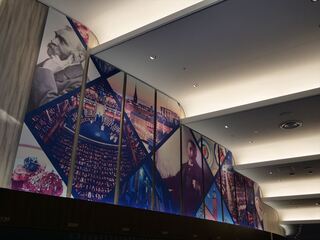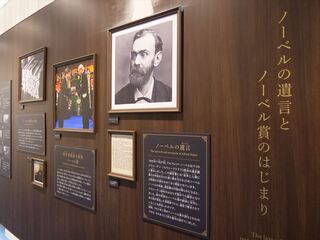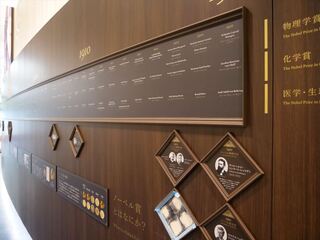Nagoya City Science Museum
TOP > Exhibition Guide > Keyword Search > Starting with "D" > Dynamite > Alfred Nobel and the Nobel Prize
Alfred Nobel and the Nobel Prize



Purpose of Exhibition
Alfred Nobel was a Swedish scientist and inventor renowned for his invention of dynamite. He established the Nobel Prize and specified in his will that much of his wealth be used to honor “those who, during the preceding year, shall have conferred the greatest benefit to humankind.” The Nobel Prize, thus established, has continued to be awarded since 1901.
The displays in the Exhibition Hall describe what kind of man Alfred Nobel was, explain what the Nobel Prize is, and present the history of the prize with a focus on the scientific categories and the Japanese Laureates.
Additional Knowledge
Alfred Nobel (1833–1896) was responsible for many inventions, the most famous of which is dynamite. After accruing vast wealth, Nobel directed in his will that much of it be used to establish Nobel Prize. In 1901, several years after his death, the Nobel Prize was formally established.
Nobel Prize Categories
Alfred Nobel’s will specifies the six prize categories of physics, chemistry, medicine or physiology, literature, and peace. For the science categories, the Royal Swedish Academy of Sciences selects the winners of the physics and chemistry prizes, while the Karolinska Institute in Stockholm selects the winners of the Physiology or Medicine prize.
An additional award category, the Nobel Prize in Economic Sciences, had not been specified in Nobel’s will, but was established in 1968 by Sweden’s central bank, the Sveriges Riksbank.
Selection of Winners
The selection of Nobel Laureates is conducted in secret, and the full list of nominees is not made public until 50 years after the awarding of the prizes. The conditions include the requirements that no deceased person can be awarded a prize and that the nominee must be alive when the prize decision is announced (although exceptions to this rule have been made in the past).
Nobel Prizes winners are not limited to one person per category; a prize may be awarded concurrently to a maximum of three people in the same prize category.
Award Ceremonies
The Award Ceremonies are held in Stockholm on December 10, the anniversary of Alfred Nobel’s death. At this event, the king of Sweden presents the Nobel medal, the Nobel diploma, and the Nobel Prize monetary award to the Laureates. The Nobel medal displays Alfred Nobel in profile, is made of 18-karat solid gold, and is plated with pure gold. The diplomas feature a distinct design for each winner and are devised by renowned designers. The prize money for the Nobel Prize is funded by the interest accrued by Alfred Nobel’s legacy. Currently, the prize is valued at about 100 million yen.
The Nobel Prize Laureates
The exhibits introduce the successive Nobel Prize Laureates as well as the winners of multiple Nobel Prizes and the Japanese-born prize winners.
Tetsuro Ojio, author, curator
